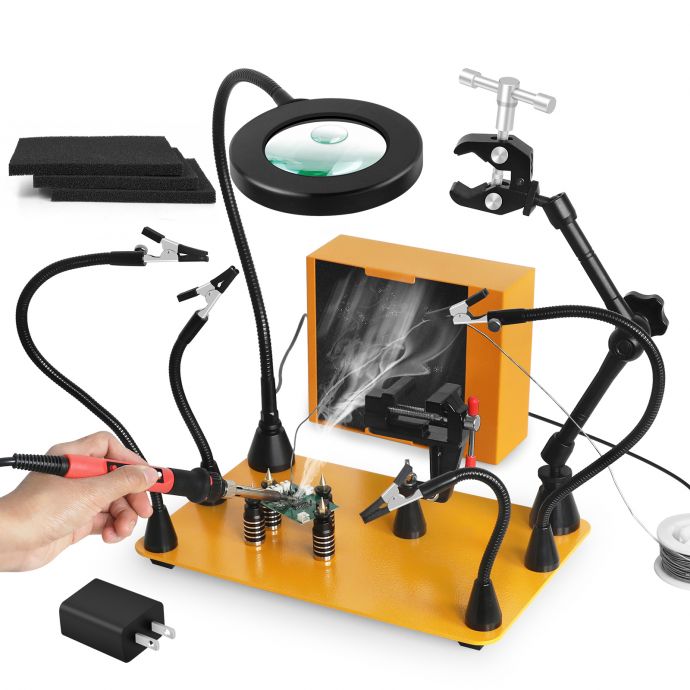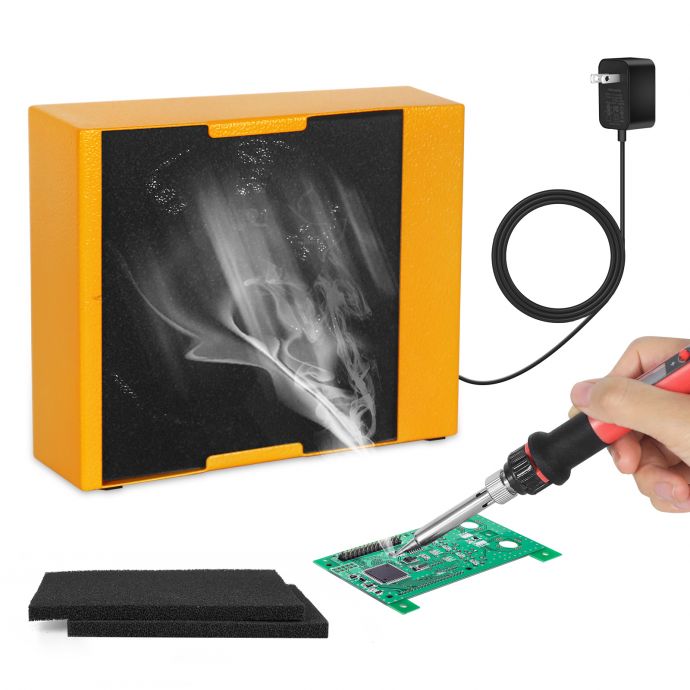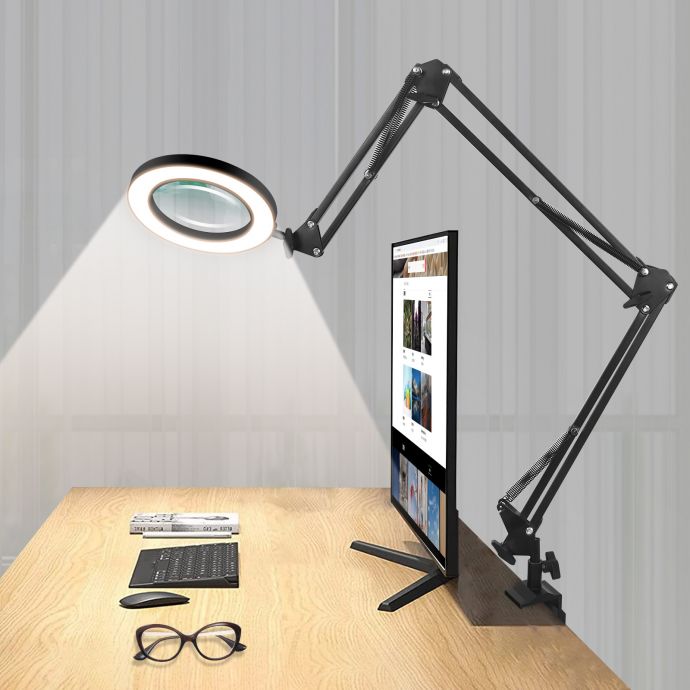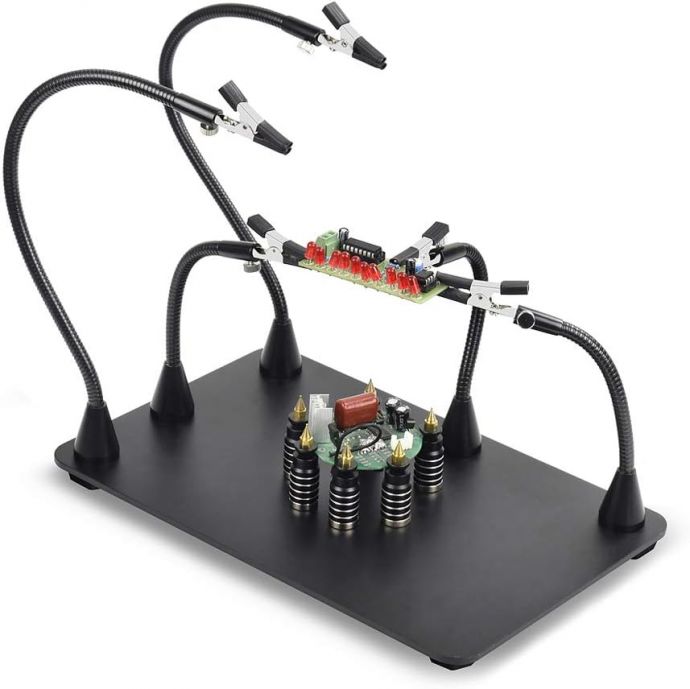In the world of electronics and DIY projects, soldering stands as a cornerstone technique. It allows hobbyists and professionals alike to create intricate and reliable electrical connections. However, soldering can also produce hazardous fumes that pose risks to health and safety. Enter the world of the 12V solder fume extractor, a compact, efficient device designed to absorb and remove smoke generated during soldering, thereby ensuring a safer working environment.
### Understanding the Need for Fume Extraction

Soldering involves melting solder, often composed of a combination of lead and tin, onto metal parts to form an electrical connection. During this process, flux, a chemical cleaning agent, is used to prepare the surfaces for bonding. When heated, both the solder and the flux release fumes containing potentially harmful substances like lead oxide and other organic compounds. Regular inhalation of these fumes can lead to serious respiratory issues and other health problems over time.
For DIY enthusiasts and small-scale electronics manufacturers, particularly those working in enclosed or poorly ventilated spaces, the need for a reliable fume extraction system cannot be overstated. But commercial extractors can be expensive and bulky, making the DIY 12V solder fume extractor a perfect alternative for those seeking to enhance their soldering safety without breaking the bank.
### Components of a DIY 12V Solder Fume Extractor

Creating your own solder fume extractor is an achievable project that merges practicality with creativity. The fundamental components you’ll need include:
1. **12V DC Fan**: This is the heart of your fume extractor. A fan with sufficient airflow (measured in CFM or Cubic Feet per Minute) is required to effectively draw in the smoke. A typical computer cooling fan works perfectly for this purpose.
2. **Activated Carbon Filter**: This component is responsible for trapping the fumes and particulates. Activated carbon is highly porous and effective at absorbing smoke and odors.

3. **Power Supply**: A reliable 12V power source is crucial, whether it’s a dedicated power adapter or a simple battery pack.
4. **Frame or Housing**: This holds everything together. You can design it using simple materials like acrylic, wood, or repurposed materials. The design should ensure the fan and filter are securely mounted.
### Steps to Build Your Own Solder Fume Extractor

**Step 1: Gather Your Materials**
Start by collecting all the required components. Ensure your 12V fan and activated carbon filter fit together snugly, either by measurement or by custom modifications.
**Step 2: Design the Housing**
Sketch a design for your extractor’s housing. It can be a simple box or an angled structure to direct the airflow effectively. Consider ventilation aspects to ensure that the air can flow through freely and reach the filter without obstruction.

**Step 3: Assemble the Fan and Filter**
Mount the fan inside your housing, ensuring the airflow is directed towards the filter. The fan should be positioned such that it effectively draws smoke through the filter. Secure the activated carbon filter in front of or behind the fan, depending on your design.
**Step 4: Connect the Power Supply**
Wire your fan to the 12V power supply, making sure connections are secure and insulated. A switch can be added to easily control the power without unplugging the adapter.

**Step 5: Test Your Extractor**
Before using it for soldering, test your fume extractor. Place it above a source of light smoke or a smoldering object to ensure it effectively draws the smoke through the filter. Check for any escape of smoke which may indicate a need for better sealing in your design.
### Optimizing Your Fume Extractor

Ensure your fume extractor is providing optimal performance by considering the following points:
- **Filter Maintenance**: Regularly inspect and replace the activated carbon filter to maintain effective smoke absorption. This is crucial as the filter can become saturated over time, reducing its efficiency.
- **Airflow Rating**: The fan’s CFM rating is a good indicator of effectiveness. If you find your extractor underperforming, consider upgrading to a fan with a higher airflow rating.
- **Positioning**: The positioning of the extractor is crucial. It should be placed close to your soldering activity, ideally between you and the work area, to effectively capture the maximum amount of smoke.
### Enhancing Your Workspace Safety
While the fume extractor significantly reduces health risks, additional safety measures enhance its effectiveness:
- **Ventilation**: Work in a well-ventilated area to complement the extractor’s operation.
- **Personal Protective Equipment**: Using masks with particulate filters can provide added security against fume inhalation.
- **Regular Breaks**: Taking breaks during extended soldering sessions can minimize exposure.
By pairing these best practices with your DIY fume extractor, you create a safer soldering environment.
### Conclusion
The DIY 12V solder fume extractor showcases a perfect blend of innovation, practicality, and safety, revolutionizing the way we approach soldering. This project empowers electronics enthusiasts to protect themselves effectively and affordably. As you embrace this DIY mastery, you not only enhance your safety but also add a valuable tool to your workspace that reflects your commitment to health and well-being. Embark on this journey of crafting your own fume extractor and breathe easier as you dive deeper into the world of soldering.









